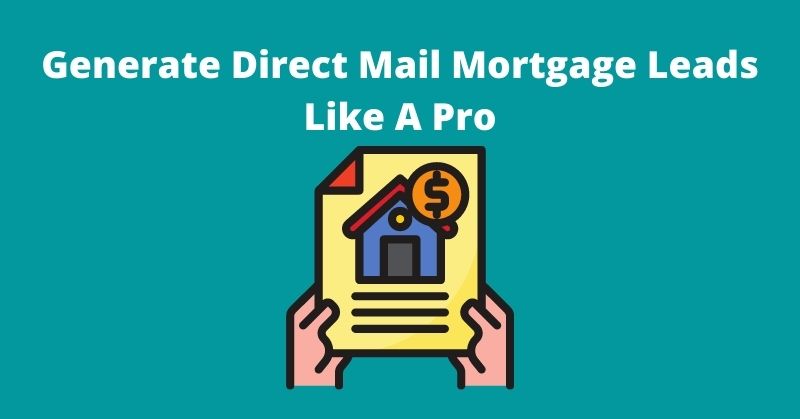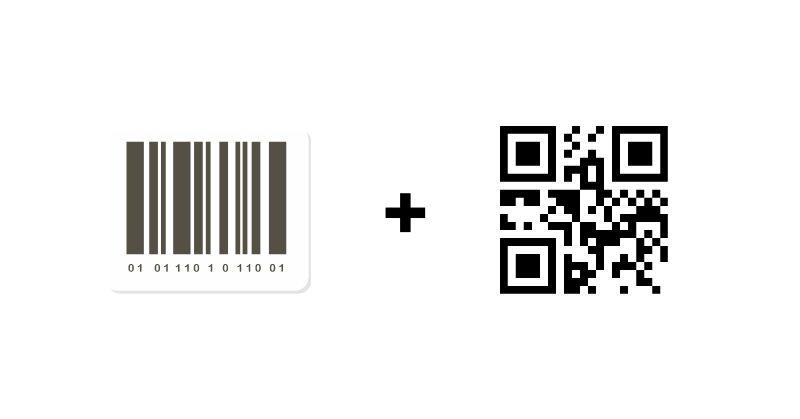
The mortgage industry is a competitive business. Potential customers may not be loyal to any individual lender and consider mortgages a commodity where one lender is as good as the next. Unless your company has a huge advertising budget, just getting borrowers to recognize your brand can be extremely difficult. Not everyone can afford celebrities like well-known comedians and sports figures to pitch their brand on national TV spots. So how can mortgage companies stand out from the crowd? More and more marketers are generating direct mail mortgage leads using software and automation.
Consistently delivered relevant and personalized messaging is always a smart move. Personalized campaigns that deliver the right messages to a carefully selected group outperform mass marketing approaches nearly every time.
When you think personalization, digital messaging might be the channel that first comes to mind. But did you know that direct mail now features the same opportunities for personalization and targeting that marketers deploy with digital channels? Well-executed direct mail mortgage lead generation campaigns generate a greater response than all the digital channels combined.
Direct Mail Mortgage Leads: Tech Has Changed The Game

Borrowers are familiar with the personalized experiences they enjoy online and expect a higher level of relevance and personalization in all communications with an organization. Modern direct mail marketing techniques allow mortgage companies to provide those desired experiences while simultaneously lowering their costs and increasing the leads they generate with the direct mail portion of their marketing campaigns.
Though direct https://www.postalytics.com/blog/direct-mail-response-rates/mail costs more than digital-only strategies, developments in printing and mailing technologies make it much more affordable — even in small volumes. Top mortgage originators are using data to create marketing campaigns that attract potential customers, and they include direct mail as part of their marketing strategies.
Direct mail has been part of mortgage company marketing plans for decades. The difference today is how these organizations use the channel along with digital messaging. They deploy email, SMS, web, and social, besides direct mail to keep their names in front of future customers over the long term.
In the past, sending direct mail required long lead times as you found graphic artists and copywriters to create the marketing pieces. Then you had to work with local print service providers to negotiate quantities, prices, and schedules. Traditional offset printing technology contributes to this inefficient and expensive mail approach.
Today, digital printing presses are replacing the older offset printing methods for many applications, including direct mail.
See how direct mail is changing. Read: “15 Top Direct Mail Marketing Trends”
Not Expensive if Done Right
With direct mail automation workflows, printers eliminate most of the time-consuming and expensive pre-print preparation steps. Mortgage company marketers can use pre-designed templates for letters and postcards that reduce reliance on graphic artists. With systems like Postalytics they can mail in small quantities, right from their CRM systems. They won’t have to order large volumes of materials to secure a reasonable per-piece price. From the marketer’s viewpoint, the entire direct mail experience has improved from the way it was done several years ago.
Besides saving on print production costs, lenders using available data quality tools no longer waste large amounts of money on unqualified prospects or postage for undeliverable mailpieces.
Targeting is Key

One of the biggest mistakes mortgage lenders can make with direct mail is failing to identify their targeted audience. They rely on old familiar methods to acquire lists of people they believe to be potential customers, without being very selective. Then they waste lots of money to send mail to a large group hoping to get the attention of the few who are currently in the market for their services.
Precise targeting means mortgage companies can stop wasting money on production and postage costs to solicit business from people who do not fit the profile of desired customers. With credit bureau data, marketers can trim the mailing list with disqualifiers such as eliminating late-paying individuals, and focus their efforts on people with preferred credit scores. By accessing other databases, marketers can filter out deceased homeowners or target specific groups of borrowers such as those with VA loans or adjustable-rate-mortgages (ARMs). Mortgage-related filtering criteria might include the prospect’s age, loan-to-value, and income.
Money spent to produce undeliverable mailpieces is wasteful. Databases such as the National Change of Address file (NCOA) updates addresses for people who have moved. Postalytics automatically updates addresses with the USPS data to improve deliverability of mail sent through our service.
If mortgage companies can filter out obvious unqualified buyers and tailor their message and imagery to each individual remaining on their mailing list, they can easily double the conversion rate. The cost per closed loan drops with better targeting and personalization. When they don’t narrow the target list and treat all prospects the same, the cost per closed loan increases. In tight markets, this is a problem that jeopardizes profitability.
No More Mass Mail
Data-driven marketing means mortgage lenders can, for instance, send a different series of postcards and letters to homeowners vs. renters. Variable messages and images will appeal to different age and income groups. Young families may look for larger homes with yards while empty-nesters are more interested in condos or downsizing. The photos and details on the mailpieces should vary according to recipient profiles. A cash-out offer may tempt one person, while their neighbor’s postcard touts the benefits of refinancing. The more details you collect about your prospects, the better you can tune your message and the look of the mailpieces. Online editors with built in digital proofing technology makes it easy to adjust the mailings to be memorable and relevant to each prospect that receives the mail.
The nature of the business you seek will determine the filtering parameters. You may include or exclude borrowers from a direct mail list based on financial, geographic, or demographic data. The data will also impact the text, images, and schedule of your direct mail campaigns.
First-time homebuyers will require extra guidance and information. They haven’t gone through the mortgage process before, so the theme of direct mail pieces directed to this group will be education. The good news is that these prospects may have no preferred lender. The first mortgage company to make an impression on them has a big advantage.
Home sellers are also good candidates for focused marketing campaigns. A good number of sellers list their homes for sale before they arrange financing for their next home purchase. These prospects are more sophisticated than the first-timers — they’ve already bought a house and are now selling it. A campaign aimed at this group might focus on any changes in the mortgage markets that have occurred since the sellers bought their current homes.
The only way to be sure about which designs, messages, and offers generate the best response is by testing. You can start with small representative subsets of your list and try different approaches. Be sure to track the results by using different phone numbers or codes. Deploy a method called “A/B Testing” — a tactic used by big brand marketers all the time. Choose the mailpiece versions that performed best with the test group and use them for subsequent mailings.
For more tips about testing, read “Direct Mail Testing – A Best Practices Guide”
Though every element of a digitally printed direct mail piece may be variable, be sure to enforce consistency once you identify what works best. Make sure you display your corporate colors, logo, or loan officer photos on all your printed and digital marketing pieces. Use the same fonts throughout. This consistency promotes brand recognition.
Plan Your Campaigns: Touch Your Audience Several Times

Some mortgage lenders tried direct mail in the past and were unimpressed with the results. This is usually because they concentrated all their efforts on a single mailing. Contacting prospects only one time will not make an impact. Though it may generate some opportunities for new business, marketers should not expect a dramatic rise in lead activity after their first mailing.
Research tells us it takes at least seven or more “touches” before a prospect responds. Some of those touches may be electronic and some physical, but make sure your strategy allows for multiple, consistently generated marketing pieces sent to each identified prospect.
Another common mistake made by mortgage company marketers is failing to establish the reason for sending the mailpieces. Direct mail must highlight the benefit to the borrower. If you want them to call you, a bullet list of services you offer won’t do it. Simply asking prospects for their business every time won’t make much of an impression. Include useful information like current rate facts, local real estate market conditions, financial tips, etc.
Always make sure each piece makes it perfectly clear about the action you want the recipient to take. Include the phone number or other contact information and don’t forget about your social media handles. Actions that require no direct communication, such as watching a video, downloading a checklist, or using an online calculator, are more likely to keep prospects engaged with your brand.
See “Direct Mail Leads: 4 Easy Steps to Create Winning Campaigns”
Digital-Like Features of Direct Mail
Digital marketers often point to tracking as an advantage of delivering material electronically. Postal mail has its own tracking system called Informed Visibility (IV). IV allows marketers to get information about when the USPS delivers each mailpiece to the recipient. The data gathered by a system called Intelligent Mail Barcode (IMB) that enables the USPS to scan each mailer as it proceeds through the delivery cycle.
Marketers using direct mail automation tools are able to integrate these mail delivery scans and use them to drive other channels, like email & digital, as a part of their direct mail mortgage lead generation programs.

Mail even comes with its own multi-channel delivery capability called Informed Delivery (ID). With this free provision from the US Postal Service, an image of a postcard or letter is sent to Informed Delivery subscribers via email on the morning the USPS will deliver the physical piece to their homes. This service doubles the impressions for ID subscribers at no charge. Over 40 million people have signed up to receive ID notifications. Marketers need do no extra work to enable the standard ID service—it’s automatic!
Other tactics allow mortgage marketers to connect physical direct mail to digital assets and to track individual responses using methods such as personal URLs (pURLs) or quick response (QR) codes. Direct mail that includes these methods are perfect ways to identify the most interested and engaged prospects. Today’s top direct mail automation systems supports both pURLs and QR codes, making it easy to add these useful tracking devices to direct mail letters and postcards.
By feeding the relevant delivery and response data back to CRM or Marketing Automation tools, mail becomes a channel that looks, acts and feels much more like a digital marketing tool than in the past.
Consumers Trust Offers Received In The Mail

Trust is another area where direct mail shines for mortgage lenders. People are cautious about financial solicitations they receive via email, telephone, or text message. But mortgage marketers can still use these channels after they establish brand recognition and a solid reputation through informative and relevant pieces delivered through the mail. Consumers in all age groups view the mail as the most trustworthy source of information from financial service providers.
Marketers have a wealth of digital tools and information they can use to make an impression on prospective customers. Videos, online applications, testimonials, instant credit approval, and online chat are just a few digital methods mortgage companies can use to interact with possible customers. These are all wonderful techniques, but you must get borrowers to visit the online locations where these assets are kept. Direct mail is an ideal way to direct customers to the desired online destinations.
Direct mail isn’t just for marketing to potential customers. Real estate agents and financial planners are often excellent sources of referrals. These professional people get hundreds of emails per day and your email asking for a referral probably gets buried in their inboxes or sent to junk folders. In contrast, your referral network receives only a few pieces of postal mail per day. Try sending direct mail postcards or letters to these people every 30-60 days. Keep their contact information in your CRM system and set your automation software to send your referral mailpieces out on a pre-planned schedule.
Current customers can also be prospects for additional business. They are great referral sources you can target to receive information about new services, features, and products. You can also establish goodwill through triggered messages such as birthday greetings, holiday cards, or recognition of closing date anniversaries.
See “Profiting from Triggered Direct Mail Automation”
Generate More Direct Mail Mortgage Leads By Embracing Technology
Over the past decade, the bulk of marketer attention has been focused on digital communication channels. The cost of tactics like sending thousands of untargeted emails is so low that organizations of all types jumped onto digital channels as their main lead generation source. Unfortunately, with so many companies fighting for attention, the glut of emails, text messages, and other types of electronic marketing has created an environment where consumers are no longer paying much attention. They may even take action to avoid seeing the marketing messages by using junk mail filters and blocking software.
The average household receives about two physical pieces of marketing mail per day. Over 95% of consumers retrieve and view their mail every day. Mortgage companies seeking leads for new business can take advantage of this disparity in volume and consumer behavior to get their message across as part of planned multi-channel lead-generation strategies.
There’s little doubt that direct mail can be an effective tool for mortgage lead generation programs. The question for marketers is whether they’ll use modern technology to deploy it, or rely on old-fashioned techniques. If you’re interested in joining the savvy marketers who are deploying direct mail automation tools, get a free Postalytics account and start testing!
About the Author

Dennis Kelly
Dennis Kelly is CEO and co-founder of Postalytics, the leading direct mail automation platform for marketers to build, deploy and manage direct mail marketing campaigns. Postalytics is Dennis’ 6th startup. He has been involved in starting and growing early-stage technology ventures for over 30 years and has held senior management roles at a diverse set of large technology firms including Computer Associates, Palm Inc. and Achieve Healthcare Information Systems.
